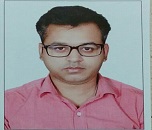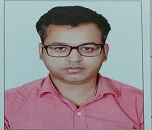Day 2 :

Biography:
J. Harini Christopher is the recipient of the Best Free Oral Paper awarded by the 21st World Congress on Mental Health, 2017 and another on mental health in the work place, WCMH, 2017 and co-author of Lester Fernandez Studentship, 2016. She obtained her Doctoral degree in Social Work. Prior to taking a position at Sampurna Monfort College, she worked as Professor at the CMR University, Bangalore and BALM, Chennai, affiliated to the TISS University, Mumbai and earlier at the Dept. of Psychiatry, SJMCH. She has worked in the field of mental illness for over 19 years and her main activities revolve around clinical work, academia and research relating to psychological well-being of different sections of society, which have been presented at National and International conferences and published. She has conducted training programs with NIMH, NTA, KPAMRC and RCI and founding board member of the Persons with Cerebral Palsy and Neuro Muscular Disorders and Board Director of the Centre for Counseling, Research, Training and Consultancy
Abstract:
Background & Aim: One of the lowest priorities in healthcare worldwide is perhaps that of maternal mental health. Post natal complications not only predispose to chronic or recurrent depression but consequently affect family and children’s cognitive, behavioral and interpersonal relationships. Most studies are traditionally hospital-based, but more than half of all cases are not detected by healthcare providers. However, fewer studies have focused on the postnatal difficulties and associated risk factors of mothers attending the Pediatric OPDs (with their babies, 0-3 months for immunization), that often go undetected and hence remain, unmanaged.
Method: Brief and user-friendly self-assessment scales assessed socio-demographic and postnatal health (SRQ 20, WHO) using purposive sampling and descriptive cross-sectional design. Information was abstracted from 55 women who consented to participate and their confidentiality assured. Data was analysed using descriptive, T test and correlation analysis (SPSS 16).
Result: Mean age of respondents was 27.71 (4.13) and that of spouses were 32.33 (3.85) years. More women (46.7%) were in the 21-25 years age group, +2 educated (53%), equal number were housewives or working (50%), had arranged marriages (55.6%), gave birth to first baby (88.9%), female child (60%) and delivered by C-section (66.7%). Significant differences in psychological difficulties (p<0.05) seen in working mothers (35.38±3.82), but not due to type of marriage, sex of child or type of delivery. The overall scores on SRQ 20 were 33.97±4.76 (range 21-40), depressive symptoms were being unhappy 46.5%; worthlessness 16.3% and thoughts of ending life 34.9%, while somatic symptoms were handshake 51.2% and poor digestion 20.9%. Correlation was negatively significant with husbands occupation (p<0.05) and non-significant with husbands’ education, income and respondents education, occupation, mode of delivery and gender of child.
Conclusion: Post natal difficulties affect 20% of mothers (best and most productive years) in developing countries, manifesting as Postpartum Depression (PPD). Unfortunately, India’s reproductive health programs do not include services for prevention or treatment of PPD. The NMHP and the draft National Policy for Women (2016) are highlighting women’s mental health on the public radar. Multi-disciplinary research, screening from non-conventional sources and multi-pronged services urgently needed.
Keynote Forum
Sangeeta Mudaliar
Keynote: CNS involvement in paediatric leukaemia/lymphoma and radiology findings

Biography:
Dr Mudaliar has continued academic engagements by conducting workshops/seminars for post graduate medical professionals and contributing in medical journals.
Her extensive work experience in renowned national as well as international centres has fine tuned her clinical judgement and communication skills especially with patients and their families.
Currently she is working as a Consultant in Department of Hematology-Oncology at B J Wadia hospital for Children, Parel, Mumbai.
Abstract:
Central Nervous System (CNS) complications in leukemia and lymphoma can be divided in two broad categories viz. due to CNS disease and secondly, due to complications of the therapy. Rarely an unrelated or coincidental complication may be encountered. The aim is to characterize CNS complications and MRI findings observed in leukemia and lymphoma patients. A retrospective analysis of data of 558 leukemia and lymphoma patients registered over 7 years period at B J Wadia Hospital Mumbai. The total numbers of patients with CNS manifestation at the time of presentation, during therapy or follow-up were 59 (10%). Patients with primary involvement of CNS were 16/59 (15 with blasts in CSF and 1 patient with lymphoma had changes on MRI but CSF was negative for blasts), 23/59 had secondary involvement, 2/59 had CNS symptoms unrelated to leukemia and 19/59 had CNS leukemia during or after completion of therapy. 2 patients had isolated ophthalmic/orbital relapse. Clinical presentations were proptosis in 3/59 patients, headaches in 22/59 patients, seizures in 5/59 and encephalopathy in 11/59 patients. 19 patients were asymptomatic; all asymptomatic patients had blast in CSF at the time of diagnosis or relapse. 23 patients with secondary CNS involvement included 5 patients of sagittal sinus thrombosis, 2 viral encephalitis, 3 methotrexate induced encephalitis, 6 in press, hemorrhage and extensive thrombosis in 1 APML case, ocular tuberculosis, CNS granuloma, infarct, radiation induced secondary neoplasm, cytarabine induced encephalopathy and brain abscess in one case each. 2 patients who had CNS involvement unrelated to disease had neuro cysticercosis, one of them a case of AML presented with seizures 1 month after diagnosis, was not on therapy till then, the other presented after completion of ALL maintenance. Patients with secondary CNS involvement had typical findings on MRI like PRESS in 6 patients, Thrombosis in 6, Infarct and Brain abscess accounted for 1 each, MTX induced leuco-encephalopathy in 2 patients, meningioma in 1, multiple granuloma in 1 and encephalitis in 2 patients. The child with orbital TB, presented with proptosis and was initially thought to have relapse but correct diagnosis was based on histopathology report, JC virus was confirmed in CSF virology studies. It can be concluded that neurological complications may have varied presenting symptoms and imaging abnormalities. It is important to have appropriate inputs from clinicians regarding the drugs used and intensity of therapy received. Radiologist with these inputs helps in arriving at correct diagnosis. Most of the time correct diagnosis can be made based on clinical history and radiology findings. Histopathology or microbiologic diagnosis is required in some patients. Special considerations to tuberculosis and neuro cysticercoisis should be kept in mind in developing countries. Treatment becomes challenging in these patients as the concomitant chemotherapy can be more toxic. Patients in our centre presented with ocular TB, CNS TB and AML with neuro cysticercosis have successfully completed therapy and are on regular follow-up without CNS complications.
Session Introduction
Catherine Maurice
Professor
Title: The challenge of treating neurologic complications in the era of immunity
Time : 13:50 PM-14:20 PM

Biography:
Catherine Maurice completed her residency training in Neurology at the University of Montreal in 2013. She then started a 2-year fellowship in neuro-oncology at the Pencer Brain Tumor Centre of Princess Margaret Hospital, Toronto, under the supervision of Dr Warren P. Mason. In 2015, University of Toronto Health Network recruited Dr. Catherine Maurice to work as an attending physician and clinical teacher. She developed a new neuro-oncology clinic focusing on the to assessment of neurologic complications resulting from systemic cancers and novel therapies. She also manages another clinic focused on primary brain tumors and is enrolled in the multidisciplinary Gamma-Knife Clinic of the Krembil Neuroscience Centre. Dr. Maurice is actively involved in teaching, trying to incorporate new technologies and virtual reality into medical education.
Abstract:
We entered in a new era of cancer treatment characterized by the arrival of novel therapies. Immunotherapy has revolutionized the management of various solid tumors and hematological malignancies. On the other hand, the emergence of unpredicted multi-systemic side effects resulting from those agents became challenging for clinicians. Neurological toxicity, while rare, could be life threatening and even lethal. In addition, neurological toxicity is certainly under-diagnosed, considering the paucity of current supporting literature. Novel therapies are linked to unprecedented clinical pictures; physicians need to be vigilant. The next step, establishing a plan in the absence of algorithm, relies on judgment and insight. This presentation aims to raise awareness about the emergence of uncommon neurological events, in the new era of immunotherapy. Short cases scenarios will be presented supported by radiology images and pathology pictures. “Quiz” questions will be prepared to interact with the audience. The goal is to trigger interest about the field of Neuro-Oncology. The presentation will be adapted for guests of every level of training (students, PhD, physicians, specialists).
J Harini Christopher
Professor
Title: Youth interrupted: Early separation, well-being and suicidal behaviour
Time : 14:20 PM-14:50 PM
Biography:
-
J. Harini Christopher is the recipient of the Best Free Oral Paper awarded by the 21st World Congress on Mental Health, 2017 and another on mental health in the work place, WCMH, 2017 and co-author of Lester Fernandez Studentship, 2016. She obtained her Doctoral degree in Social Work. Prior to taking a position at Sampurna Monfort College, she worked as Professor at the CMR University, Bangalore and BALM, Chennai, affiliated to the TISS University, Mumbai and earlier at the Dept. of Psychiatry, SJMCH. She has worked in the field of mental illness for over 19 years and her main activities revolve around clinical work, academia and research relating to psychological well-being of different sections of society, which have been presented at National and International conferences and published. She has conducted training programs with NIMH, NTA, KPAMRC and RCI and founding board member of the Persons with Cerebral Palsy and Neuro Muscular Disorders and Board Director of the Centre for Counseling, Research, Training and Consultancy
Abstract:
Epidemiological studies have been done from a cross section of adolescents living in rural and urban in-tact families. However, less focus has been given to the psychological well-being and suicidal behaviour of adolescents with early parental separation, traumatic life experiences and living in non-biological homes.
Method: Paper and pencil method assessed socio-demographic, suicide behaviour (SBQ-4) and psychological well-being (WHO-5) among 73 adolescents aged 10 -18 years, living in ten relocated homes, registered with Child Welfare Committee, using purposive sampling, descriptive cross sectional and single-subject design. Managers of two homes refused permission and thirteen schedules were excluded. Leading questions pertaining to early familial life or experiences in present homes were avoided due to the adolescent’s vulnerable situation. Confidentiality assured. Data was analysed using Descriptive statistics, T Test and correlation (SPSS 16), with 95% CI.
Results: Mean age was 13.86 (±1.93) years, more girls in 10-12 years (p<0.001), residing in homes for 7- 10 years (p<0.001). One-fourth of boys were studying in high school and almost a third of girls in middle school. While girls had significantly (p<0.05) higher overall scores on SBQ (5.59 ±2.17), more boys had made/thought about killing themselves (1.51±.91), while significantly more girls (p<0.05) were contemplating suicide (1.39±.65). Significant differences in well-being seen in one in five adolescents (p<0.001), indicating poor well-being and need for further evaluation.
Recommendations and Conclusion: Adolescents will be the productive workforce in the next five to ten years, account for about a third of all suicides in the country and a large majority of these young attempters, have not received any kind of psycho-social interventions. The absence of accurate estimates has resulted in a serious mental health treatment gap among child and adolescents in low and middle income countries. A multi-disciplinary team approach can solve the human-resource gap in healthcare, with psychiatric social workers’ evidence-based services playing a major role in the prevention, management and policy of mental, neurological and substance use disorders, including family and school based identification and preventive interventions.
Rajib Dutta
Doctor
Title: Parkinsonism and cerebellar ataxia and colon adenocarcinoma in anti-Ma2-associated encephalitis
Time : 14:50 PM-15:20 PM

Biography:
I am a postgraduate neurology trainee 1st year in china with MRCP UK London ,Diploma in emergency Medicine (Royal college UK) ,Diploma in clinical neuropsychology (UK),Pediatric Neurology certification BPNA (UK, ongoing) . My professor is a movement disorder and neurodegenerative specialist in china and we see different spectrum of movement disorders patient like chorea, dystonia , PD , tremors ,myoclonus , AD ,FTD , ALS ,LBD ,WD and other disorders like, PERRY syndrome ,Episodic ataxias ,Parkinson plus syndromes (MSA,PSP,CBD), Dyskinesias (PKD ,PED etc) so my research interest revolves around PD , Camptocormia ,Paraneoplastic antibody syndromes or degeneration related to movement disorders,I have recently submitted a meta analyses of vit D and its association with PD in frontiers of neuroscience under review plus submitted this above mentioned abstract in Movement disorders under review , working on WD with secondary PKD ,Face of Giant Panda in WD ,PARK 2 neuropathy .
Abstract:
Statement of the problem : Anti-Ma2 antibody -associated encephalitis, which usually occurs in young men with germ cell tumors of the testis with features of encephalitis ,it can also present in elderly females with basal ganglia disorder features like Parkinsonism and cerebellar ataxia in absence of limbic or brainstem or di encephalic encephalitis . Patients may not present with any form or symptoms of encephalitis but the treatment response rate with steroids , IVIG , plasmapharesis to control the initial symptoms is very high and after resection of the tumor all the symptoms can be totally cured .So ,even there is no evidence of tumor on basic contrast CT /MRI scans ,other special imaging like FDG -PET or highly advanced tumor searching imaging plus serum tumor markers of different tumors should be considered as the tumor spectrum associated with anti ma 2 antibody encephalitis is huge and resection of the tumor can totally cure the patient .
Case: A 68-year-old female presented to our department with resting tremor of right hand for 2 years . After 6 months, resting tremor gradually involved her right leg. Antiparkinsonian drugs were initiated but her symptoms worsened gradually. Since last 3 months, she developed features of imbalance with occasional falls and a weight loss of 10 kg.Neurological examinations showed features of Parkinsonism. Brisk DTR right side more than left with abnormal cerebellar signs.
CE MRI mild atrophy of cerebellum. Anti-Ma2 antibodies in serum and CSF positive .Serum cancer antigen 72-4 was elevated. A sigmoid colon mass was discovered by colonofiberoscopy and adenocarcinoma was diagnosed via tissue biopsy. Steroids, IVIG and resection of the tumor completely cured the disease.
Conclusion: 1) Parkinsonism or cerebellar ataxia as main component of anti-Ma2-associated encephalitis was rarely reported.

Biography:
Satu Pihlaja is currently a PhD student at the University of Helsinki, Finland. She studies internet interventions for mental health with a research group in the University Hospital of Helsinki and Uusimaa. She has published a review paper on therapeutic alliance in internet interventions.
Abstract:
The efficacy of human supported internet-delivered asynchronous self-help Cognitive-Behavioral Therapy (iCBT) for depression is well established. Studies suggest that guidance is important and that programs without therapist support are less effective. Different ways of support have been studied. The objective of this study was to find out if an Intensive Telephone Support (ITS) can increase the proportion of patients completing the program (primary outcome), to prevent unnecessary delays during the treatment and to improve the effects of iCBT on symptoms of depression. Patients on iCBT who expressed sub-optimal motivation (n=100) have been randomly assigned to either Intensive Telephone Support (ITS) added to iCBT or to iCBT as usual (seven sessions of standard CBT on the internet, with written asynchronous therapist-patient communication). There were significantly more program completers in the ITS group than in control group. Predictors and mediators of these effects, as well as monetary rationale for ITS will be discussed.

Biography:
Consultant Radiologist in MRI department Nanavati Superspeciality Hospital, Mumbai. Consulting Radiologist at Sunridges Hospitals, MumbaiTeleradiology consultant for Acuscan Imaging Centre, Manjeri Diagnostic Centre, Kerala, Lotus Imaging Centre khargarh, Vidhi Diagnostics, Rajnandgaon and Nucleus Diagnostics, Lagos.
Abstract:
With ongoing advances, neuro-imaging has moved much beyond morphology. Now we can provide functional and physiologic information through non-invasive imaging techniques as well help the surgeon in pre-operative planning as well as disease follow up. Arterial spin labeling is a novel, completely non-invasive, non-contrast MRI perfusion technique which can predict areas of neo-angiogenesis and help grade the tumor. Various studies have proven its comparable sensitivity and specificity to routine dynamic susceptibility contrast perfusion. Diffusion tensor imaging ascertains if the white matter tracts are destroyed, infiltrated or displaced by the tumor as well as guides the surgeon to plan surgical trajectory. With functional MRI, areas of activation for key task like motor activity, sensation, speech could be delineated, again helping in surgical planning and in improving patient outcome. By providing high resolution 3D data set for neuro navigation the surgical entry point could be made more precise decreasing the craniotomy size. Along with T1, T2, diffusion, susceptibility weighted images, arterial spin labeling, diffusion tensor imaging, MR spectroscopy, DSC perfusion, functional MRI and neuro-navigation are a part of the brain tumor imaging protocol at our institute, especially in cases with a surgical plan of management. The aim of this presentation is to highlight the role and utility of these MRI imaging techniques in brain tumor imaging.

Biography:
Prof. Radu Mutihac is Chair of Medical Physics Section, University of Bucharest, and works in Neuroscience, Signal Processing, Microelectronics, and Artificial Intelligence. As postdoc/research associate/visiting professor/full professor he has run his research at the University of Bucharest, International Centre for Theoretical Physics (Italy), Ecole Polytechnique (France), Institut Henri Poincaré (France), KU Leuven (Belgium). Data mining and exploratory analysis of neuroimaging time series were addressed during two Fulbright Grants in Neuroscience (Yale University, CT, and University of New Mexico, NM, USA). His research in fused biomedical imaging modalities was carried out at the Johns Hopkins University, National Institutes of Health, and Walter Reed Army Institute of Research, MD, USA.
Abstract:
Studies of brain connectivity alterations using resting-state functional magnetic resonance imaging (rsfMRI), diffusion tensor imaging (DTI), and, more recently diffusion spectroscopic imaging (DSI) data have advanced and enlarged our knowledge on the organization of large-scale structural and functional brain networks, which consist of spatially distributed, but functionally linked regions that continuously share information.
Brain's energy is largely consumed at rest during spontaneous neuronal activity (~20%), while task-related increases in metabolism energy are minor (<5%). Spontaneous ultralow-frequency fluctuations in BOLD-based rsfMRI signals (<0.01Hz) at the level of large-scale neural systems are not noise, but orderly and organized in a series of functional networks that permanently maintain a high level of temporal coherence among brain areas that are structurally segregated and functionally linked in resting state networks (RSNs). Some RSNs are functionally organized as dynamically competing systems both at rest and while performing various tasks.
The default mode network (DMN), the most important RSN, is even more active during rest and involved in realization of tasks like memory retrieval, emotional process, and social cognition.
Cortical connectivity at rest is reportedly altered in several neurological and psychiatric disorders. Most recently, human brain function has been imaged in fMRI, and thereby accessing both sides of the mind-brain interface (subjective experience and objective observations) has simultaneously been performed. As such, functional neuroimaging moves onto new potential applications like reading the brain states, discriminate neurological dysfunctions (if any), brain- computer interfaces, lie detection, and alike.
The contribution aims to review and evaluate the most current approaches for early detection and classification of cognitive impairments and dementia, particularly among syndromes with relatively similar behavioral effects, based on alterations in brain connectivity at rest explored by rsfMRI, DTI, and DSI.
- Neurooncology
Session Introduction
Rajib Dutta
Doctor
Title: Many faces of DCTN-1 (Dynactin) gene mutation in neurodegenerative diseases

Biography:
Rajib Dutta is a Postgraduate Neurology Trainee in China with MRCP UK London, has completed his Diploma in Emergency Medicine and Critical Care (Royal College UK), Diploma in Clinical Neuropsychology (UK), Pediatric Neurology certification BPNA (UK, ongoing).
Abstract:
Axonal transport machinery is central to neuronal health and survival, with dysfunction implicated in several neurodegenerative disorders including AD, FTLD, MND/ALS and PD and PD plus syndromes, HMN 7B and Perry Syndrome all associated with dynactin pathology. A 45 year old working lady presented to us with bradykinesia for six months, accompanied with difficulty in walking for four months. Six months ago, the patient started feeling clumsy while doing house hold work and her movements became slower as time passed by. Four months ago, she started to have difficulty in walking which gradually aggravated. Since onset, she was depressed and experienced sleep related behavioral issues but never lost weight. Her mother had similar symptoms but was on anti-parkinsonian drugs. P/E: increased muscle tone in all 4 limbs, right>>left with reduced right arm swing, with masked type faces. In view of positive family history, parkinsonism symptoms, depression/apathy patient was diagnosed with definite PS (Perry Syndrome) supported by international diagnostic criteria. To confirm PSG showed airflow restriction and hypoventilation using apnea hypopnea index with no respiratory acidosis in ABG. Genetic test was performed which confirmed novel point DCTN 1 gene mutation. Patient was started on anti-parkinsonian agents, anti-depressants and clonazepam and her symptoms got somewhat better. We have diagnosed the first Asian case of a PS with a novel point mutation p.G67S of DCTN1 gene in exon 2 not reported in literature yet. Our observation suggests that patients/family members may not present with all the cardinal features of PS but still it has to be ruled out with gene testing mainly because of two reasons: (1) Early timed diagnosis will lead to early symptomatic treatment which can significantly modify the progression of disease and (2) improve quality of life by use of diaphragmatic pacing and can prevent life-threatening episodes of acute respiratory failure and eventually death.

Biography:
Kiran Grant graduated with honors from the BHSc program in Health Sciences from University of Calgary, Alberta. Kiran is currently enrolled in the Medicine Faculty of University of Toronto as a MD candidate for promotion 2021. He collaborated with his supervisor, Dr Catherine Maurice, on several projects including manuscript redaction, database configuration, development of teaching tools and world health risk prevention. Most recently, Kiran collaborated with “Medicines Sans Frontiers/Doctors Without Borders” for the configuration and implementation of an adaptable template, created to improve the communication between MSF physicians on the ground and international consultants. He developed an interest in Neuro-Oncology and collaborated to the redaction of several case reports and manuscripts, aiming at raising awareness about unusual case scenarios in Neuro-Oncology.
Abstract:
In medicine, we are trained to consider a common denominator in a unicist scenario to account for several concomitant symptoms, especially in young patients. Patients diagnosed with either neurologic or oncologic conditions are prone to various comorbidities resulting from their initial diagnosis. Even in the case of young adults, we need to investigate a broader range of possibilities. We present the case of a young man in his early 30s, diagnosed and treated several years prior for a low-grade glioma (primary brain tumor), consulting for seizure recurrence. The main Ambition of seizures initially when his oligodendroglioma was first diagnosed however the tumor is stable on imaging for several years. Three different seizure types are documented in detail. Even if the presence of a low-grade glioma could explain by itself the seizure recurrence, the thorough symptom description and evolution lead to a different hypothesis. This case emphasizes the importance of a good clinical history and research of pertinent details in neuro-oncology patients to reach a prompt and accurate diagnosis. This case describes how three independent “seizure types” surprisingly occurred in a single patient. We threw light on three concomitant etiologies: Glioma-related seizures, pseudo-seizures and metabolic tonico-clonic generalized seizures resulting from a malignant insulinoma. The goal of this presentation is to trigger interest about the field of neuro-oncology. The patient described signed a written consent, confirming his agreement to have his history presented for academic/teaching purpose.

Biography:
Stacey resides in Fort Wayne, Indiana, and has over 20 years of Law Enforcement (LEO) and teaching experience. Stacey is currently working as a Detective with the Fort Wayne (Indiana) Police Dept., Gang, and Violent Crimes Unit. Presently, Stacey has delivered speeches/lectures at C.I.T International (Crisis Intervention), Monterey California, The National Conference on Bullying, Orlando Florida, Nextgen School Safety & Crisis Prevention Conference, Atlanta, GA, 10th Annual National School Safety Conference, Las Vegas, Nevada,
Abstract:
On June 14, 2017, at approximately 3:51 am, I was found unresponsive, while seated in the driver's seat of my unmarked FWPD vehicle. The responding Officer knocked on the window of the car until I woke up and rolled the window down. I told the Officer that was heading to KREAGER PARK, and I was immediately asked by the Officer; this was the revolver, I intended to use to end my life. I was asked if I had been drinking, I responded yes, and that I had a half glass of vodka to accelerate the effects of the painkillers/muscle relaxers I had taken to assist with my death. I admitted the consumption of several prescription pills and repletely stated that I wanted to end my life. Now, if you ask yourself; rather than obtaining me the medical attention needed. Former Indiana Governor Mike Pence, signed a law in 2015 requiring the Indiana Law Enforcement Academy to instruct trainees regarding CIT protocol. According to the FWPD CRISIS INTERVENTION TEAM POLICY #PD01-0125: If a misdemeanor crime has been committed by the individual, the mental health detention will occur, and criminal charges will not be filed. Criminal charges of any nature cannot be filed if the person has been held on a 24-hour or 72-hour hold. During my incarceration, I was not allowed to make any phone calls to my family, nor did either agency.

Biography:
Professor WK Tang was appointed to professor in the Department of Psychiatry, the Chinese University of Hong Kong in 2011. His main research areas are Addictions and Neuropsychiatry in Stroke. Professor Tang has published over 100 papers in renowned journals, and has also contributed to the peer review of 40 journals. He has secured over 20 major competitive research grants. He has served the editorial boards of five scientific journals. He was also a recipient of the Young Researcher Award in 2007, awarded by the Chinese University of Hong Kong.
Abstract:
Dysexecutive syndrome (DES) is defined as an impairment of executive functions constituting of two domains: behavioral dysexecutive syndrome (BDES) and cognitive dysexcutive syndrome (CDES) which are not accompanied always[1]. A growing body of studies demonstrated that BDES is a common post-stroke neuropsychiatric comorbidity. The prevalence of BDES in stroke survivors varies ranging from 3% to 25% possibly attributed to the lack of standardized diagnosis methods and variances in study sample and study mode.
Post-stroke BDES comprises varieties of clinical presentations, the most prevalent of which are anosognosia and hypoactivity with apathy-abulia[2]. The clinical course of BDES in stroke population has not yet fully elucidated. Some studies showed that there was only a minor decrease of prevalence of BDES several month after stroke , suggesting the possible chronicity of BDES. Possible clinical correlates of behavioral symptoms in stroke are global cognitive impairment, executive dysfunction, premorbid personality and psychopathology and stroke severity. Despite BDES is also a possible predictor of poor post-stroke physical function and can increase the burden of caregivers, it is still often underestimated and untreated. Furthermore, the treating methods for BDES are limited and lack of high quality supporting evidences. Some studies suggested that antipsychotic drugs might be effective in controlling behavioral dysexecutive problems such as agitation, apathy and disinhibition. The methods of psychosocial treatments varies including caregiver education, aromatherapy,exercise and behavioral intervention whereas their effectiveness is still under debated.
The neuroanatomical pattern of post-stroke BDES is rarely studied. Lesion studies demonstrated that disruption to frontal-subcortical circuit (FSC) is the pivotal cause of BDES[3]. First of all, frontal lobe is treated as the key component of FSC. Frontal lesion and reduced frontal volume contribute to behavioral disturbances. Particularly, abnormalities of orbitofrontal cortex (OFC) and medial prefrontal cortex (MPC) involving the reward representation, response selection and behavioral flexibility are closely correlated with apathy, disinhibition and other dysexecutive syndromes in patients with neurologic diseases. Further, Basal ganglia are involved in motivated behavior, behavioral switching theory of mind. Basal ganglia lesions can lead to apathy ,abulia ,disinhibition , irritability and labile behavior. An abrupt of BDES can be observed in those thalamic stroke patients with
complex syndromes varying according to the nuclei affected. However, very few structural brain imaging studies have been published on BDES or behavioral symptoms in stroke. The existing studies found associations between BDES/behavioral symptoms and infarcts in the right hemisphere,anterior capsule , thalamus, and WMH. These studies have many limitations such as small sample size, biased sampling, lack of standardized assessment of BDES and rude classifications of lesion location. Therefore, the studies of high quality with a more advanced method to investigate neuroanatomical lesion pattern are keenly demanded.
Except for the neuroanatomical abnormalities, cerebral hemodynamics and metabolism are also suggested as the possible mechanisms of BDES after stroke. There are a great deal of evidences supporting the role of reduced cerebral blood flow (CBF) in CDES whereas limited studies reporting the relationship of CBF and BDES. Subjects with reduced CBF in frontal lobe presented a worse behavioral executive function. On the other hand, an improvement of executive function was observed when CBF was augmented, which possibly implicated that augmentation of focal CBF could be a promising treating method of BDES. Meanwhile, several studies showed that dysexecutive function was associated with lower metabolic level in frontal lobe. Further investigations on role of CBF and cerebral metabolism in BDES in stroke population are suggested to apply.
To conclude, the existing literatures on BDES and stroke suggest that BDES is one of the most common post-stroke psychiatric comorbidity and a combined neuroanatomical and neurobiological lesion accounted to stroke substantially serves as the underlying mechanisms of post-stroke BDES. Standardized diagnosis criteria and a deeper understanding of the mechanism of post-stroke BDES is urgently needed , which may benefit to recognize BDES in stroke survivors as early as possible and select the appropriate treatment, therefore, result in a better outcome of stroke.
Acknowledgement.
The project is supported by the Health and Medical Research Fund, reference number: 02130726.
Jimmy Alexander
PON Hospital East Jakarta, Indonesia
